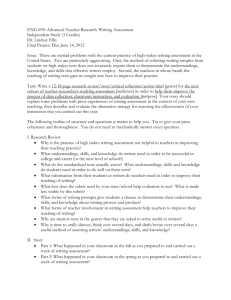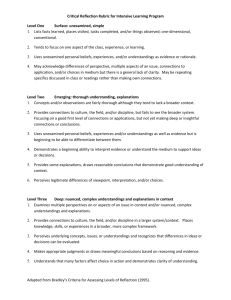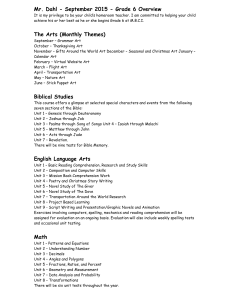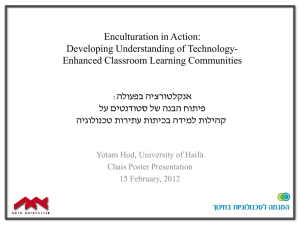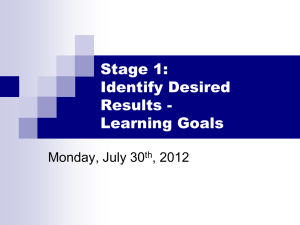geography syllabus-2015
advertisement
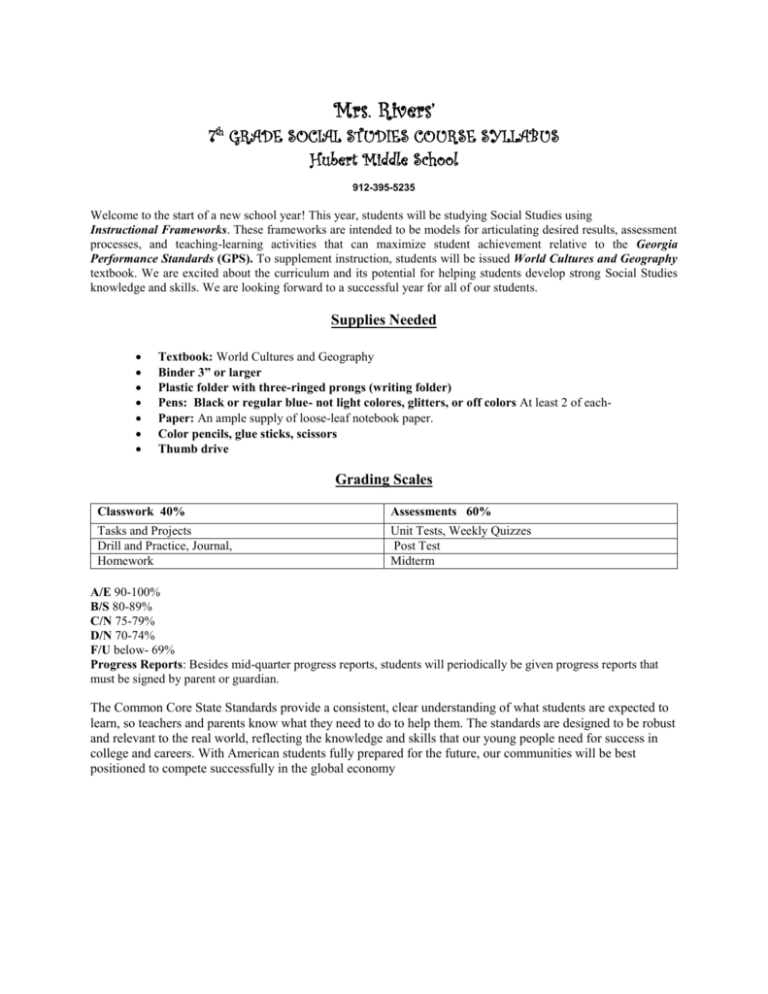
Mrs. Rivers’ 7 GRADE SOCIAL STUDIES COURSE SYLLABUS Hubert Middle School th 912-395-5235 Welcome to the start of a new school year! This year, students will be studying Social Studies using Instructional Frameworks. These frameworks are intended to be models for articulating desired results, assessment processes, and teaching-learning activities that can maximize student achievement relative to the Georgia Performance Standards (GPS). To supplement instruction, students will be issued World Cultures and Geography textbook. We are excited about the curriculum and its potential for helping students develop strong Social Studies knowledge and skills. We are looking forward to a successful year for all of our students. Supplies Needed Textbook: World Cultures and Geography Binder 3” or larger Plastic folder with three-ringed prongs (writing folder) Pens: Black or regular blue- not light colores, glitters, or off colors At least 2 of eachPaper: An ample supply of loose-leaf notebook paper. Color pencils, glue sticks, scissors Thumb drive Grading Scales Classwork 40% Assessments 60% Tasks and Projects Drill and Practice, Journal, Homework Unit Tests, Weekly Quizzes Post Test Midterm A/E 90-100% B/S 80-89% C/N 75-79% D/N 70-74% F/U below- 69% Progress Reports: Besides mid-quarter progress reports, students will periodically be given progress reports that must be signed by parent or guardian. The Common Core State Standards provide a consistent, clear understanding of what students are expected to learn, so teachers and parents know what they need to do to help them. The standards are designed to be robust and relevant to the real world, reflecting the knowledge and skills that our young people need for success in college and careers. With American students fully prepared for the future, our communities will be best positioned to compete successfully in the global economy Course Description and Objectives Unit 1 GA.SS7H. Africa Geographic Understandings SS7G1. The student will be able to describe and locate the important physical and human characteristics of Africa. 15 SS7G2. The student will discuss the impact of government policies and individual behaviors on the African environment. 44 SS7G3. The student will explain the impact of location, climate, physical characteristics, natural resources, and population size on African countries. 23 Government/Civic Understandings SS7CG1. The student will demonstrate an understanding of the modern governments of Africa. 21 Africa: Economic Understandings SS7E1. The student will describe different economic systems (traditional, command, market, mixed) and how they answer the basic economic questions (What to produce? How to produce? For whom to produce?) and explain the basic types of economic systems found in South Africa, Egypt, Nigeria, and Morocco. 32 SS7E2. The student will give examples of how voluntary trade benefits buyers and sellers in Africa over time. 2 SS7E3. The student will describe the factors that influence economic growth and examine their presence or absence in such African countries as Chad, South Africa, Nigeria, and Kenya. 38 SS7E4. The student will explain personal money management choices in terms of income, spending, credit, saving, and investing. 14 Unit 2 Southwest Asia (Middle East) GA.SS7G. Geographic Understandings SS7G5. The student will be able to describe and locate important physical and human characteristics in Southwestern Asia (Middle East). 29 SS7G6. The student will evaluate the impact of government policies and individual behaviors on Southwest Asia's environment. 38 SS7G7. The student will explain the impact of location, climate, physical characteristics, natural resources, and population size on various Southwestern Asian countries. 29 SS7G8. The student will describe the diverse cultural characteristics of the people who live in Southwestern Asia. 29 GA.SS7CG. Southwest Asia (Middle East): Government/Civic Understandings SS7CG2. The student will describe the different political structures of the Middle East. 29 GA.SS7E. Southwest Asia (Middle East): Economic Understandings SS7E5. The student will describe different economic systems (traditional, command, market, mixed) and how they answer the basic economic questions (What to produce? How to produce? For whom to produce?) and explain the basic types of economic systems found in Israel, Saudi Arabia, and Turkey. 32 SS7E6. The student will give examples of how voluntary trade benefits buyers and sellers across time. 16 SS7E7. The student will describe the factors that influence economic growth and examine their presence or absence in Middle Eastern countries such as Israel, Lebanon, Turkey, Israel, Saudi Arabia, and Iran. 25 GA.SS7H. Southwest Asia (Middle East): Historical Understandings SS7H4. The student will describe the development of the three major religions that originated in the Middle East. 38 SS7H5. The student will describe the importance of the Ottoman Empire to Southwestern Asia. 3 SS7H6. The student will describe major developments in the Middle East during the 20th century. 37 Unit 3 Southern and Eastern Asia Geographic Understandings SS7G9. The student will be able to describe and locate important physical and human characteristics in Southern and Eastern Asia. 39 SS7G10. The student will evaluate the impact of government policies and individual behaviors on Southern and Eastern Asia's environment. 39 SS7G11. The student will explain the impact of location, climate, physical characteristics, natural resources, and population size on Southern and Eastern Asian countries. 39 SS7G12. The student will describe the diverse cultural characteristics of the people who live in Southern and Eastern Asia. 39 Government/Civic Understandings SS7CG3. The student will demonstrate an understanding of modern governments of Eastern Asia and be able to describe the structure of the national governments of India, Indonesia, China, and Japan, including the type of government, form of leadership, type of legislature, and role of the citizen. 39 Economic Understandings SS7E8. The student will describe different economic systems (traditional, command, market, mixed) and how they answer the basic economic questions (What to pro- duce? How to produce? For whom to produce?) and explain the basic types of economic systems found in India, China, and Japan. 23 SS7E9. The student will give examples of how voluntary trade benefits buyers and sellers across time. 16 SS7E10. The student will describe the factors that cause economic growth and examine their presence or absence in Southern and Eastern Asian countries such as Pakistan, India, China, and Indonesia. 38 Procedures and Expectations 1. Students are expected to attend school daily and on time. If an absence is necessary, students must return with a written excuse. 2. Students will enter the classroom on time and prepared with an agenda, supplies and completed homework assignments. 3. Students will promptly begin warm up assignment. 4. Students will allow the instructor to teach and allow classmates to learn. 5. Students are expected to ask for help when appropriate, sign up and stay for tutorial as needed (or required), and put forth every effort to learn. 6. Follow the Savannah-Chatham County Code of Conduct. I have read and understand this syllabus, procedures and expectations. Student Signature Parent Signature Thank You
